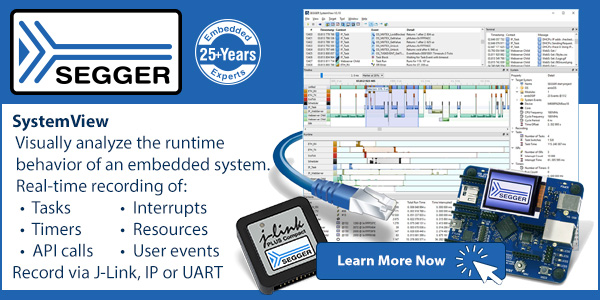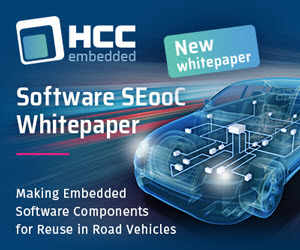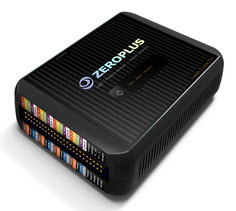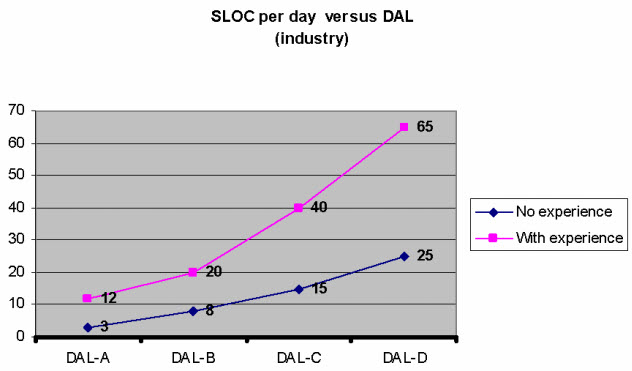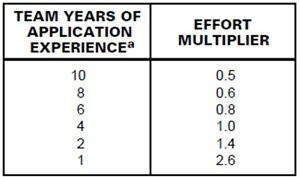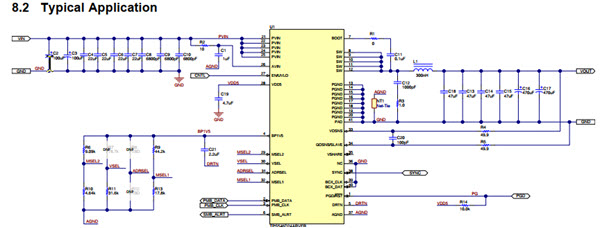|
||||||||||
You may redistribute this newsletter for non-commercial purposes. For commercial use contact jack@ganssle.com. To subscribe or unsubscribe go here or drop Jack an email. |
||||||||||
| Contents | ||||||||||
| Editor's Notes | ||||||||||
|
Dear readers: I truly enjoy and encourage your emails. Please understand that this week (and hopefully only this week) due to a detached retina I will likely be very slow in responding. Keep 'em coming! But please be patient. Jack's latest blog: Humility |
||||||||||
| Quotes and Thoughts | ||||||||||
Software is free! But, correctly placing all the ones and zeros is priceless. Ron Brombach |
||||||||||
| Tools and Tips | ||||||||||
|
Please submit clever ideas or thoughts about tools, techniques and resources you love or hate. Here are the tool reviews submitted in the past. François Baldassari wrote:
|
||||||||||
| Freebies and Discounts | ||||||||||
Cy Clarke won the CodeBot in last month's contest. This month's giveaway is one of Zeroplus's new Logic Cube Pro logic analyzers which I reviewed here. This is their top-of-the-line unit with 32 channels, 256 Msa/channel memory, and 2 GHz sample rate. It lists for $3500.
Enter via this link. |
||||||||||
| What Does Firmware Cost? | ||||||||||
I've been collecting this data for some years, and my numbers peg the cost of firmware at $20 to $40 per line of code (LOC). That's not just coding; this includes the entire life-cycle, from requirements elicitation to final delivery. And that does not include costs like certification when required for avionics or medical devices. It's pretty astonishing to interview developers and hear about their code production rates. Typically they tell me they can crank 100 to 300 LOC/day. That may be true in the pure coding phase, but is simply not relevant. The real question is: what does it cost to build a product? That includes requirements, design, coding, debug, test, integration, documentation, and release. These are all real costs that must be accounted for. In a 1996 paper by Thomas Drake (Measuring Software Quality: A Case Study, IEEE Computer Nov, 1996) NSA (you know, those folks who are listening to you at this very minute) figures they pay $70/LOC. That's $116/LOC in today's deflated greenbacks. The Space Shuttle code cost $1000/LOC. Now, this was the best code ever written, with but a single bug per 400,000 lines of code. VDC's 2017 Embedded Engineer Survey Results, once you boil down all of their data, suggests the number is about $43/LOC. Toyota has the coveted "most expensive code every written" award. Their engine control code caused the Feds to hit them with a $1.2 billion fine, which works out to over $1200/LOC. Oh, and then you have to add in those pesky actual engineering costs. Rockwell Collins, in a 2009 report ( Certification Cost Estimates for Future Communication Radio Platforms) figures for low-assurance levels (Design Assurance Level D), an experienced engineer produces 65 LOC/day:
Now, that's just for documentation, production and validation - these figures do not include the other aspects of building a product. Still, it's instructive to play with the numbers. An experienced developer in the USA will cost around $150k to $200k/year (including overhead). At 65 LOC/day that's $12/LOC, or probably twice that once all of the other, required, engineering activities are included. At 12 LOC/day for great code (DAL-A), figure on five times the price. Though inexperienced developers are a bit cheaper than old salts they are considerably less productive. Here's some more data from NASA's Software Manager's Handbook:
Now, the costs cited above assume one is working 40 hours per week on the code. An article in the May/June 2014 issue of Crosstalk claims the average developer is 50% utilized on the project at hand; other sources cite 55%. So the real costs are twice what they've cited. I recently blogged about a complaint we constantly hear: Why Does Software Cost So Much? A better question might be: Who would have imagined what a steal software is? Consider Microsoft Excel. I bet that cost billions. But what would it cost if implemented with gears and cams? Trillions? Quadrillions? |
||||||||||
| More on State Machines v. RTOSes | ||||||||||
Peter Mueler wrote two interesting articles about state machines and RTOSes:
Luca Matteini also sent some very useful article links:
Stephen Adels adds:
François Baldassari wrote:
|
||||||||||
| Free Micros - Pretty Much | ||||||||||
"There is no reason anyone would want a computer in their home." Ken Olsen, founder of Digital Equipment Corporation, in 1977 I sure wanted a computer in my home in 1977, though "home" was a sailboat at the time. Though the word "computer" invoked an image of a massive building-sized machine in most peoples' minds, the little-known technology of embedded systems was emerging. In 1974 an 8 bit processor chip cost about $2k in today's dollars. A complete, working computer was out of reach for most people. Today, not so much. A desktop or laptop is cheap. And embedded microcontrollers are in some cases so cheap as to be virtually free. Looking at Digi-Key's website Rochester Electronics (though the datasheet says "Renesas") sells a handful of parts for under a dime, in small quantities. You won't get much memory, but timers and an ADC are included. If you can spring for two bits ($0.25 - my dad used the term "two bits" a lot, but I wonder if anyone does anymore) more parts from other vendors are available. For a pair of quarters ($0.50) there's quite a selection of 32-bit MCUs available. In singles. But these are incredibly pricey parts compared the three-cent MCUs from Padauk. Yep, $0.03 for an 8-bit MCU. Apparently these even have hardware instructions to wait and delay a specified number of cycles. Ever build a bit-banging UART? It's not much fun as you've got to pick instructions based on the number of t-states they require. An interrupt or DMA request would corrupt comm. The Padauk's wait and delay would make this pretty trivial, even more so because they have a tool that will write all of that code for you. C support is minimal, but with just 1KB of ROM and 64 bytes of RAM most of us would stick with assembly. At these prices the parts could compete with a variety of I/O devices. Need a not-blazing-fast USB chip? Save a few bucks using one of Padauk's parts. Need a UART? The cheapest one listed on Digi-Key's site is $0.76. You could implement 25 using the Padauk for the same price. There's an excellent and detailed write-up here. I don't know where the company's name came from but padauk is a species of beautiful bright red hardwood that turns disappointingly brown with exposure to light.
At $11/board-foot this 12" x 6" x 1" padauk board costs almost 200 times more than a Padauk MCU Who would have thought an MCU would be cheaper than wood? It's hard to guess where the semiconductor industry will go in a few years. But of one thing I'm sure: In 1977 none of us would have dreamed of a $0.03 computer. |
||||||||||
| Failure of the Week | ||||||||||
730488 days is two thousand years! |
||||||||||
| This Week's Cool Product | ||||||||||
Attila Kalinka sent a link to TI's TPS546D24A is a 2.95-V to 16-V input, 40-A synchronous buck converter. That's right, 40A, and without external transistors. 40A in a 5 x 7 mm package. And you can parallel four of them to get 160A from a single output. I didn't find anything in the 175 page (!) datasheet about heat sink requirements, but the FETs are spec'd at 4.5mΩ. There's a thermal pad on the bottom of the device that must be soldered to the PCB. I count 20 capacitors in this typical application from the datasheet:
Note that five pins carry the 40A out of the device. That's 8A per pin, each of which is pretty tiny on an LQFN. Ten bucks in singles. Half that in quantity. Note: This section is about something I personally find cool, interesting or important and want to pass along to readers. It is not influenced by vendors. |
||||||||||
| Jobs! | ||||||||||
Let me know if you’re hiring embedded engineers. No recruiters please, and I reserve the right to edit ads to fit the format and intent of this newsletter. Please keep it to 100 words. There is no charge for a job ad. |
||||||||||
| Joke For The Week | ||||||||||
These jokes are archived here. From Jon Titus an oldy but goody: Definition of recursion: Recursion (n), see recursion |
||||||||||
| About The Embedded Muse | ||||||||||
The Embedded Muse is Jack Ganssle's newsletter. Send complaints, comments, and contributions to me at jack@ganssle.com. The Embedded Muse is supported by The Ganssle Group, whose mission is to help embedded folks get better products to market faster. |




